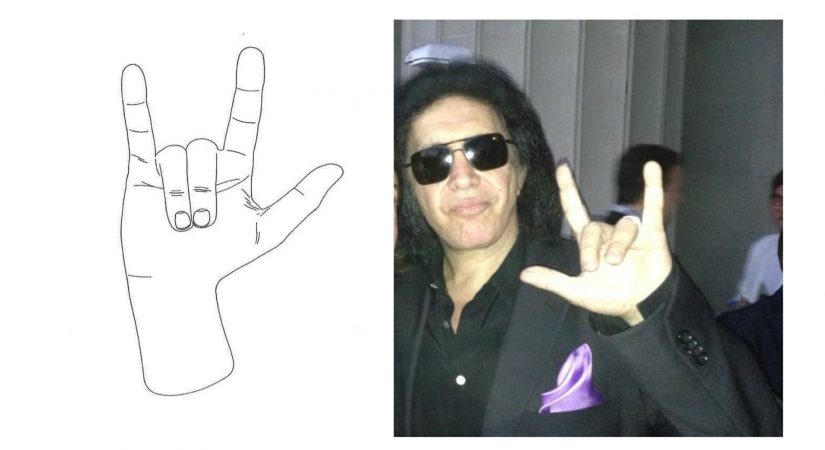Gene Simmons of notable rock band Kiss filed a U.S. Trademark application last month (Serial No. 87482739) for the above-pictured hand gesture and shortly thereafter withdrew the application. The application indicated “[e]ntertainment, namely, live performances by a musical artist; personal appearances by a musical artist” as the covered goods/services. U.S. Patent & Trademark Office records do not reflect a clear history of granting marks for hand gestures. Of the U.S. trademark registrations (currently 24) including the mark description “hand gesture”, each is shown as an artistic representation and is apparently used in a conventional manner, for example a logo on product packaging. As shown by the above right pictured specimen photo filed with Simmons’ application, his use of the “mark” is physical and not a visual representation attached to goods or advertising material. While a physical hand gesture has not historically been considered a subject of U.S. trademark protection, Simmons was not initially deterred.
This particular hand gesture has been used in the past to signify numerous different things and has been interpreted to have various meanings. It is recognized as the symbol for “I love you” in American Sign Language. Fans of the University of Texas, whose mascot is the Longhorn, use a similar gesture as well. Late heavy metal artist Ronnie James Dio used a similar hand gesture throughout his career, which he indicated was inspired by his grandmother. Other musicians also have used the hand gesture or some variation thereof. John Lennon of Beatles fame was photographed making the same symbol with his hand during the 1960’s (Simmons’ trademark application alleges a first use date in 1974). As a result of extensive use by various artists, particularly Dio, the gesture has become synonymous with certain genres of music, particularly heavy metal.
Such extensive penetration into pop culture and the public vernacular may suggest that this hand gesture corresponds to a generic mark ineligible for registration. Moreover, that this hand gesture and similar ones have multiple different meanings, including “I love you” in sign language, may also suggest a generic mark. Further, Simmons’ failure to enforce his asserted trademark rights in the face of ostensibly long use of the hand gesture by others in the entertainment field may have rendered the mark abandoned. Simmons’ attorneys likely understood the difficulties with obtaining a registration or enforcing a trademark based on this hand gesture, because the trademark application was abandoned less than a month after its filing.

